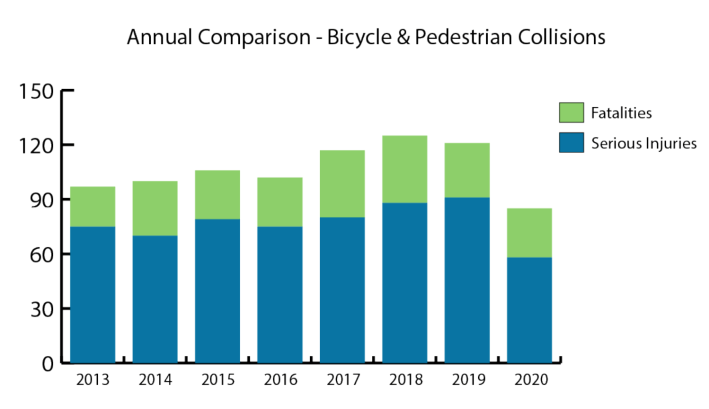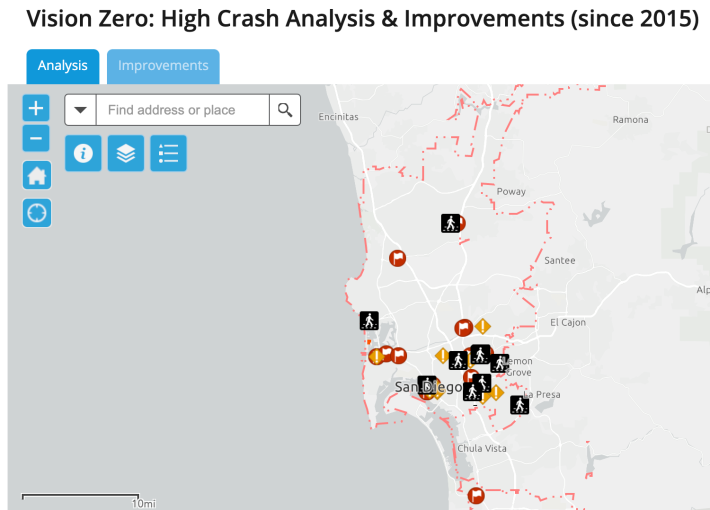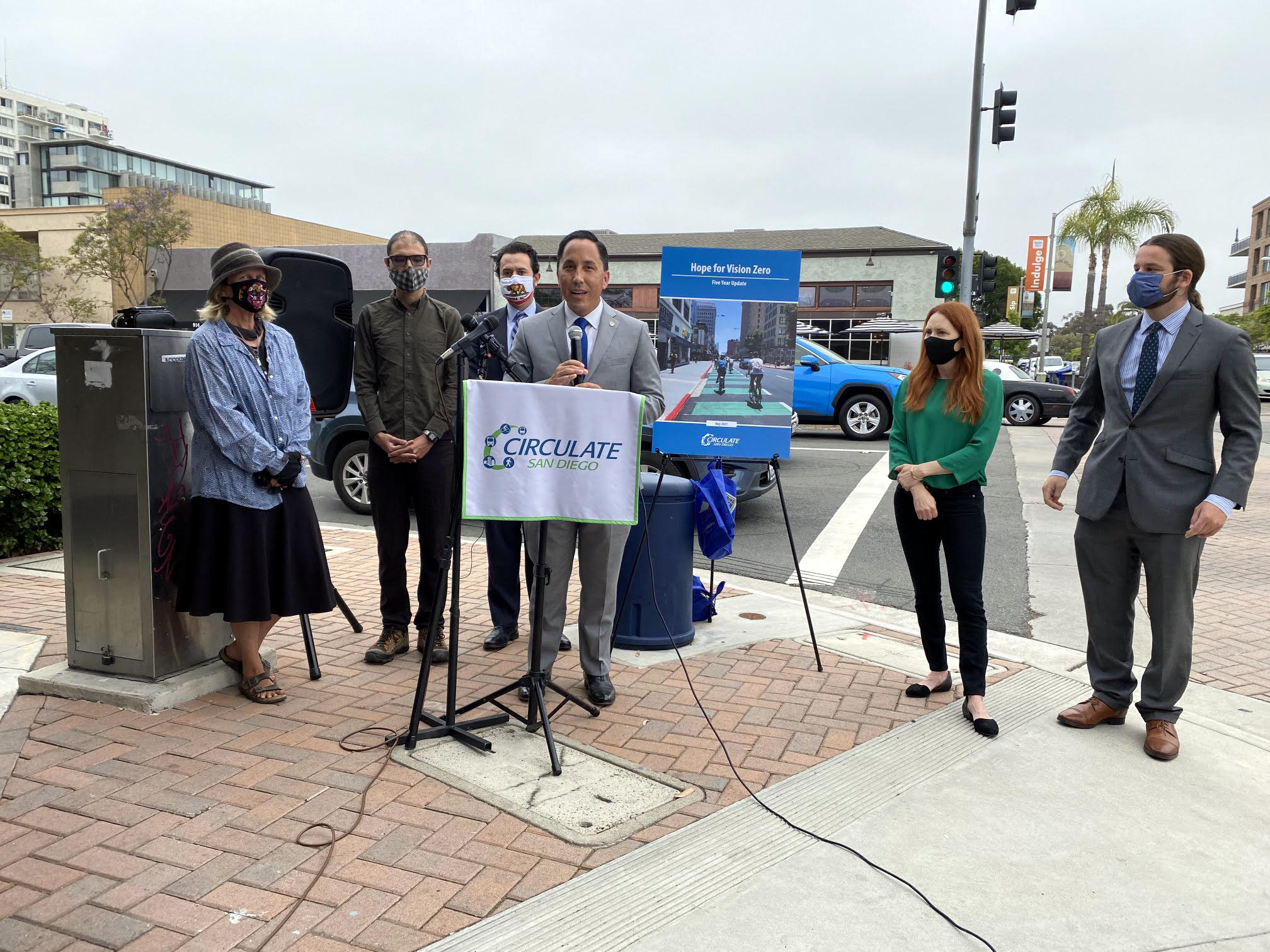Note: GJEL Accident Attorneys regularly sponsors coverage on Streetsblog San Francisco and Streetsblog California. Unless noted in the story, GJEL Accident Attorneys is not consulted for the content or editorial direction of the sponsored content.
Earlier today, Circulate San Diego released a five-year update on San Diego's goal to become a "Vision Zero City" by 2026. To read or download the report, "Hope for Vision Zero," click here.
Vision Zero is an international movement to end traffic deaths and serious injuries through careful driving, safe street design, and other safety principles. The City of San Diego committed to achieving Vision Zero by ending all traffic fatalities within ten years, beginning in 2015. Circulate's report notes that, for the second year in a row, San Diego has seen a decrease in traffic fatalities and in bicycle and pedestrian fatalities - but that the city has a long way to go to reach its goals.
"Our report shows that San Diego is creating modest but real progress to make our streets more safe," said Colin Parent, Executive Director and General Counsel for Circulate San Diego, at a press event earlier today.
2018 marked the highest point for total injuries and fatalities and bicycle and pedestrian injuries and fatalities in San Diego. From 2018-2019, pedestrian and bicycle fatalities decreased by 19 percent, to thirty fatalities, and serious injuries increased three percent, with 86 serious injuries. In 2020, the pandemic resulted in a steep decline in pedestrian and bicycle fatalities and serious injuries in San Diego. However, despite this decline, harm to bicyclists and pedestrians remained high, with 27 bicycle and pedestrian fatalities and 58 serious injuries.
Of course, those 2020 numbers may be an outlier, and not signs of a trend, because of the pandemic. However, 2020 saw record highs in pedestrian fatalities nationally, so San Diego at least bucked that trend.


San Diego’s investment in Vision Zero has been substantial, but it is not sufficient if San Diego is to reach its goal of eliminating serious injuries and fatalities by 2025. By the end of fiscal year 2021, the City of San Diego will have invested $146.3 million in Vision Zero improvements. San Diego has emphasized fixes at the most dangerous intersections and corridors in its first phases to get the greatest "bang for the buck." Unlike many parts of the state where traffic safety has become a partisan issue, in San Diego Vision Zero has had bipartisan support under both Republican Mayor Kevin Faulconer and Democratic Mayor Todd Gloria.
In 2017, Circulate San Diego identified the “Fatal 15” - the fifteen most dangerous intersections in the City of San Diego - and campaigned for the city to fix them. Improvements to those intersections, which included high visibility crosswalks, audible pedestrian signals, and countdown timers, were completed in February 2019.
In January 2019, Faulconer committed to improve nearly 300 intersections throughout San Diego. Those improvements, which include pedestrian countdown timers and high visibility crosswalks, were slated to begin construction last summer. The city's Vision Zero strategic plan lays out the actions that the City of San Diego will pursue from 2020 to 2030. It includes annually constructing 25 new or improved pedestrian crossings, forty miles of new or improved bikeway, and repairing or constructing at least two miles of sidewalk.

Circulate San Diego notes that the data available from the city was somewhat inconsistent, with multiple injuries sometimes listed together in one report and at other times in multiple reports. The report makes two recommendations to the city: Do a better job of collating and storing data, and continue investing in Vision Zero projects.
Circulate San Diego is also working with the Office of Traffic Safety to improve education around the causes of traffic crashes and what drivers should do to make streets safer for all road users. Its program, Crash Not Accident, educates San Diegans about their role in preventing traffic deaths and serious injuries by acknowledging that crashes are not merely “accidents,” but are the result of human error and systemic decisions.






